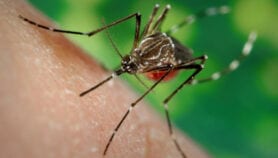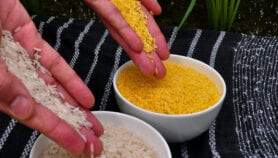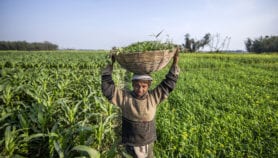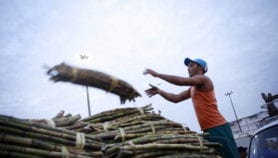By: Suman Sahai
Send to a friend
The details you provide on this page will not be used to send unsolicited email, and will not be sold to a 3rd party. See privacy policy.
Suman Sahai of the Gene Campaign in India proposes a cautious approach to the adoption of GM crops in developing countries, and calls for transparency and equity to be fully integrated into future development of the technology.
The author is convenor of the Gene Campaign, which campaigns against the privatisation of the world’s genetic resources and works to secure the rights of custodians of these resources, and is based in New Delhi, India.
It is frequently claimed that biotechnology offers huge potential to increase food production and improve the nutritional quality of food. In principle this claim may well be true. In practice, however, its dominant proponents — namely private corporations — are not using the technology to produce either more or better food for the world’s poorest people.
Indeed, despite its promise, developing countries face real and legitimate concerns about genetically modified (GM) crops, both in terms of the science itself and the policies governing its application.
Part of these concerns stem from the fact that GM research presently focuses on large-scale commercial agriculture, primarily in the developed world, the principle goal of which is to maximise corporate profits. As a result, the technology currently brings little benefit to small farmers and consumers in poor countries, bypasses the hunger issue, and poses a serious threat to smaller-scale, sustainable agriculture.
Current research, for example, concentrates on developing GM varieties of commercial crops such as soya, cotton, and canola. Similarly research on maize — a major staple crop in many developing countries — targets yellow maize (which is used for animal feed and sugar-syrup), rather than white maize (which is used for food). The traits investigated are predominantly tolerance to proprietary herbicides — Monsanto’s ‘RoundUp’ being a classic example — and insect resistance.
In contrast, crops that are widely consumed in developing countries, such as pulses and vegetables, as well as traits such as salt and drought tolerance that are of interest to both farmers and consumers in developing countries, are largely neglected.
Research priorities
The above factors suggest that we should seriously address the question of whether it is appropriate for GM technology to be pursued, both in terms of research and adoption, by developing countries. My feeling is that this should only be done if research funds and new technologies are re-focused to address the food needs of the developing world and the crop needs of small farmers.
At the same time, it is crucial that the level of public spending on agricultural research is at least maintained, and ideally increased, to create scientific data that is publicly available. This is particularly important given that relatively little research on crops that are pro-farmer, pro-poor, and pro-developing country is at present being undertaken by the private sector.
Research funds for conventional breeding must not be diverted into GM research: we must remember that conventional breeding, rather than GM techniques, still contributes the bulk of new crop varieties for small farmers. The level of public spending on GM research should be in line with anticipated benefits to society, especially in developing countries.
Sustainability of food production
In addition to the issue of research priorities, there are widespread concerns about both food safety (including allergenicity and toxicity issues) and, perhaps more importantly, the impact of GM crops on the environment. Another area of concern, of particular relevance to developing countries, is the impact of GM technology on sustainable food production and the self-reliance of farmers.
The fear here is that a significant increase in the uptake of GM crops by farmers will strike a major blow to genetic diversity in the field by reducing the number of crop varieties under cultivation. For example, we know that during the ‘green revolution’, there was a loss of genetic diversity in food and cash crops following the introduction of high yielding varieties (HYV).
Farmers were, understandably, enthusiastic about the high input/high yield advantage of these varieties. But they tended to ignore other varieties that had important traits, such as aroma, salt tolerance or drought resistance. As a result, several traditional varieties of rice and vegetables disappeared from farmers’ fields in India. GM crops will serve to strengthen rather than reverse this trend, GM varieties are similarly designed to confer specific advantages to crops that could lead to other characteristics being ignored and eventually disappearing.
Furthermore, GM technology is likely to increase the dominance of corporations in the area of food production, particularly if strict intellectual property regimes are permitted. This applies particular to the patenting of seeds. I would argue that plant breeders’ rights, and not patents, should be employed to protect farmers’ interests. Similarly, both the profits and new technologies that are derived from GM crop research should be shared with the farming communities whose landraces and varieties have been used in breeding, as part of an equitable benefit-sharing arrangement.
Finally, the development of sterile seed technologies should be banned, as there is a danger that it will be used as an instrument of control by forcing farmers to purchase fresh seeds every season.
Environmental concerns
One issue that has raised particular concern is the transfer of genes via pollen flow. This is a normal biological phenomenon, and there is no reason to think that ‘foreign’ genes inserted into plants through genetic modification will be exempt from the process. Indeed, there is already evidence of gene transfer in GM canola crops in Canada, with herbicide resistance genes appearing in non-GM weeds (see reference below).
Scientists acknowledge that they are only just beginning to understand the extent and impact of this kind of gene transfer on crops in the field and their wild relatives. In my view, more detailed studies on GM crops — particularly those of relevance to developing countries — are needed before their release can be permitted.
In this context, regions that are “centres of origin” of crops deserve special attention. These areas, where farmers first adapted crops from wild plants, and where genetic diversity therefore tends to be greatest, should not be subjected to the risk of being contaminated by foreign material from GM crops.
For example, current plans to introduce Bt rice (which has been engineered to make an insecticidal toxin) to India — home to the centre of maximum rice diversity in the world — are too hasty. Until the impacts of gene flow are better understood, transgenic crops should not be grown in such areas.
Is GM technology really necessary for India?
The Indian government has already indicated that it is willing to embrace GM technology, and approved the cultivation of Bt cotton earlier this year. But a number of factors suggest that India — along with other developing countries — should think carefully before proceeding along this path.
In most parts of the country, for example, the yield potential of existing varieties has not yet been reached, due to lack of resources, infrastructure, and adequate information. Recent studies have shown that yields of rice and wheat can be increased up to three times by simply changing farming practices (for example, line-sowing rather than broadcasting seed, early nursery raising, thinner transplantation, and reducing the amount of fertiliser used). Rather than looking for a GM bandwagon to jump on, India should be investing in basic training in these areas.
Similarly, post-harvest food losses can be as high as 20 or even 30 per cent. Again, this suggests that India should concentrate its limited resources on better storage, transportation and processing, rather than invest in expensive GM technology in its bid to increase food production.
The introduction of Bt crops — the main method used to produce pest-resistant GM crops — should be given special attention. The build-up of insect resistance against these crops has already been documented, and is likely to be a major problem in farms (typically small land holdings) that fail to implement a non-GM zone around their Bt crop fields.
In any case, with Bt cotton seed priced around 3 to 4 times higher than existing hybrids, and only a small estimated saving on pesticide, the economic benefits for small farmers do not look promising. Besides, sustainable alternatives, such as Integrated Pest Management approaches, already exist for disease management.
Moving forward
The way GM technology is being developed must shift from meeting the priorities of big business to addressing the specific needs of developing countries if it is to provide safe and sustainable solutions to the problems faced by small farmers.
Furthermore, the debate on the risks and benefits of GM crops must be conducted in an open and transparent way that encourages public engagement with the issues. For example, data should be easily accessible to farmers who wish to assess the safety or desirability of a particular crop. And field trials of GM crops must always be evaluated by independent researchers, rather than in those with an economic interest in the crop being studied.
Overall, GM technology could make an important contribution to food security and poverty alleviation. But it is only one of the many tools needed to combat the problems faced by developing countries. Transparency, equity and abundant caution will have to be an integral part of future approaches if this technology is to be accepted.
Reference:
Downey, R.K.1999. Gene flow and rape — the Canadian experience. Gene Flow and Agriculture: Relevance for Transgenic Crops, 109-16. British Crop Protection Council.
Related external links:
Gene Campaign website













